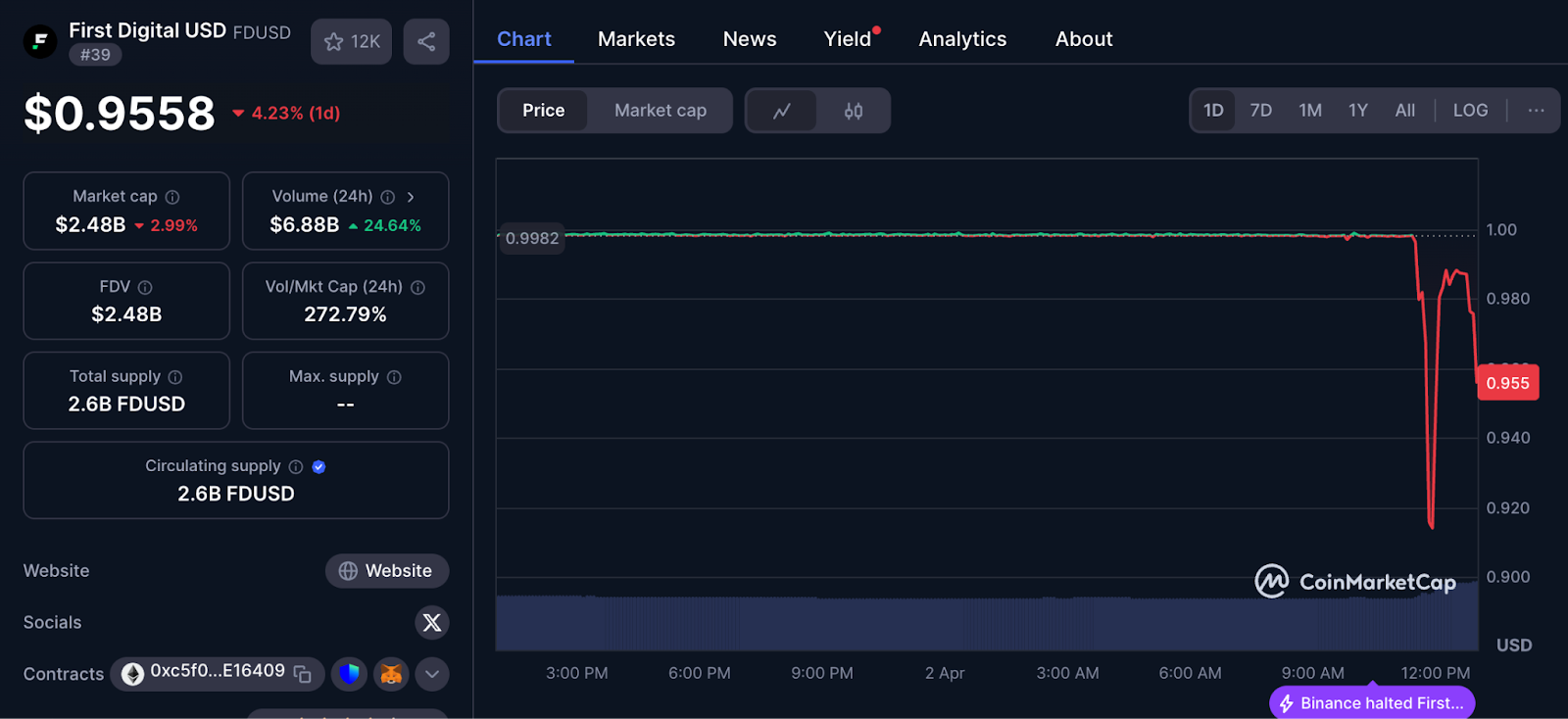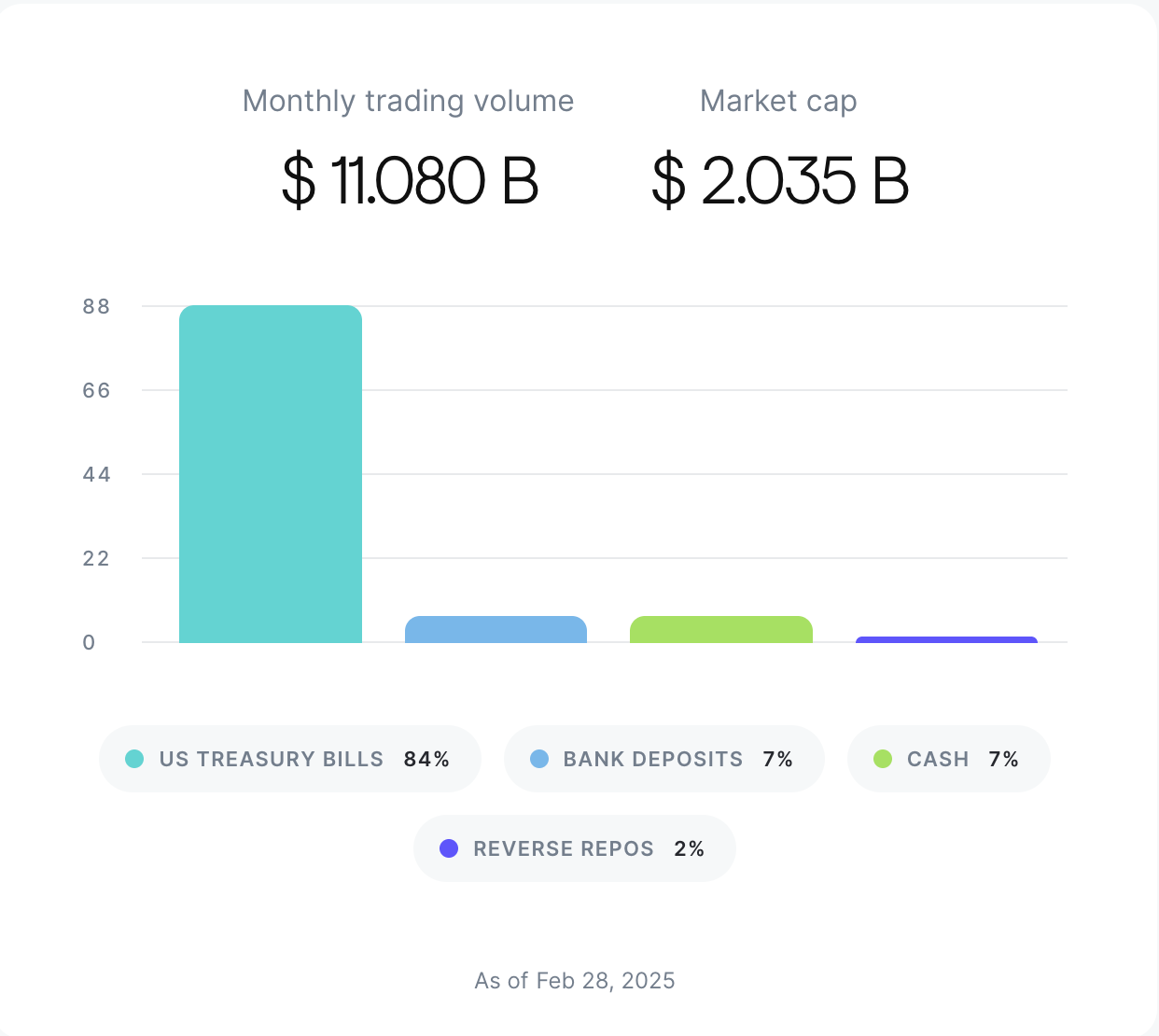Source: Cointelegraph Original: "{title}"
The stablecoin FDUSD, issued by First Digital and pegged to the US dollar, became unpegged on April 2 after Justin Sun, the founder of the Tron network, made bankruptcy allegations. Sun claimed that First Digital, the issuer of FDUSD, had gone bankrupt.
However, First Digital quickly responded to these allegations, assuring users that the company is fully solvent and that FDUSD is still fully backed and redeemable 1:1 by US dollars.
The company also pointed out that the current controversy involves another stablecoin, TrueUSD (TUSD), rather than FDUSD. In a post on X on April 2, First Digital wrote:
"Every dollar supporting FDUSD is completely safe, secured, and backed by US Treasury bonds. The specific International Securities Identification Numbers (ISIN) for all reserves of FDUSD are listed in our audit report and are clearly verified."
Additionally, First Digital stated that it would take legal action against Sun's comments on social media. A company spokesperson said, "This is a typical smear campaign by Justin Sun aimed at attacking his business competitors."

FDUSD Stablecoin Unpegged: Source: CoinMarketCap
Proof-of-Reserve audits are a form of on-chain crypto verification used to confirm whether custodians, crypto companies, or stablecoin issuers possess the digital assets they claim to hold. This technology aims to enhance transparency and reduce market uncertainty.
Proof-of-Reserve audits utilize Zero-Knowledge Tech and Merkle Trees—a data structure used to verify on-chain information—as an alternative to traditional audit reports or asset proofs widely used in the crypto industry.
While this method has not yet achieved real-time tracking of reserves and liabilities, it promises greater transparency and reliability compared to existing audit systems that do not use on-chain real-time data.

As of February 28, 2025, First Digital's reserve audit report. Source: First Digital
Tal Zackon, founder of the Tres Finance audit and reporting platform, previously told Cointelegraph that current asset proofs and third-party audit reports can only reflect a "snapshot" of reserves, which may be manipulated, exploited, or misunderstood.
As stablecoins increasingly integrate into global capital markets and key financial infrastructures (such as stock exchanges, custodial services, and clearinghouses), stablecoin issuers may need to adopt proof-of-reserve tools.
This integration requires stablecoin issuers to provide up-to-date real-time data, which may need to be updated multiple times per minute, rather than relying on the monthly audit reports typically released by companies to prove asset reserves.
免责声明:本文章仅代表作者个人观点,不代表本平台的立场和观点。本文章仅供信息分享,不构成对任何人的任何投资建议。用户与作者之间的任何争议,与本平台无关。如网页中刊载的文章或图片涉及侵权,请提供相关的权利证明和身份证明发送邮件到support@aicoin.com,本平台相关工作人员将会进行核查。




